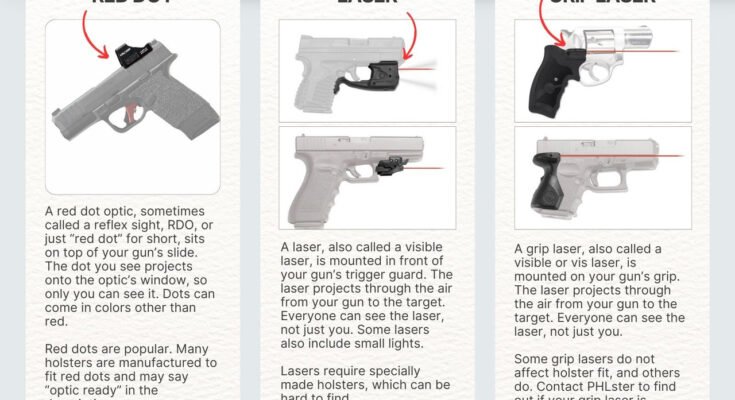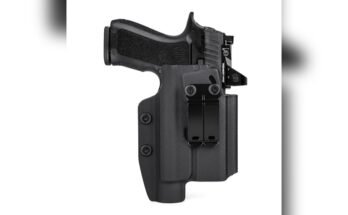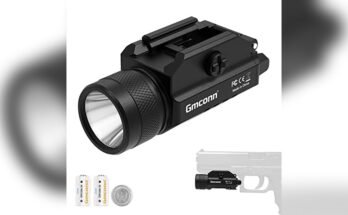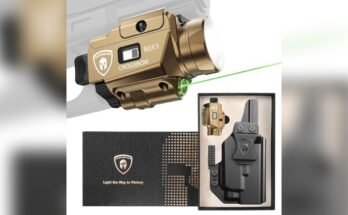You want a holster that locks in, carries safe, and draws clean. I’ve spent years testing holsters on the range and in daily carry. I’ve made mistakes so you don’t have to. Here’s the simple truth: your holster fits if it fully shields the trigger, seats the gun with no wobble, keeps the gun in place during movement, and lets you draw and reholster without fighting it. In this guide, I’ll break down how to know if a holster fits your firearm, with real-world checks you can use today. How do I know if a holster fits my firearm? Let’s make it clear and easy.

What “Proper Fit” Really Means
A proper holster fit is about safety, retention, access, and comfort. It should cover the trigger guard completely. It should hold the gun snug without crushing or rubbing the slide or sights. You should feel a clear seat or click when you holster, and it should not shake loose.
Think of it like a seatbelt. It should restrain when you need it, but stay out of your way when you move. If you must force the gun in or yank it out, that’s not a good fit. If it rattles or shifts on your belt, that’s not a good fit either.
Many major makers define fit around model-specific molds, trigger coverage, and retention checks. If a holster is “one size fits all,” be careful. Model-specific usually equals safer and more consistent.

Step-By-Step Holster Fit Check
Use this simple test at home with an unloaded firearm.
- Safety first: Unload the gun and double-check the chamber. Do not skip this.
- Seat the gun: Press the firearm into the holster with normal pressure. You should feel it stop at the same point each time.
- Trigger coverage: Look and feel. The trigger guard must be fully covered. No gaps. No wiggle room near the trigger.
- Retention check: Hold the holster upside down over a soft surface. Give a few light shakes. The gun should stay put. If adjustable, turn the screw until it retains without binding.
- Draw stroke: Wear the holster as intended. Clear the cover garment, get a full firing grip, draw straight up. It should be smooth and repeatable.
- Reholster check: Reholster with control. The mouth should stay open. No collapse or snag. No need to point the muzzle at your body.
- Movement test: Walk, sit, bend, jog in place. No shift, dig, or pop-out. The belt clips or loops should not peel off the belt.
If it fails any step, adjust or choose a different holster.
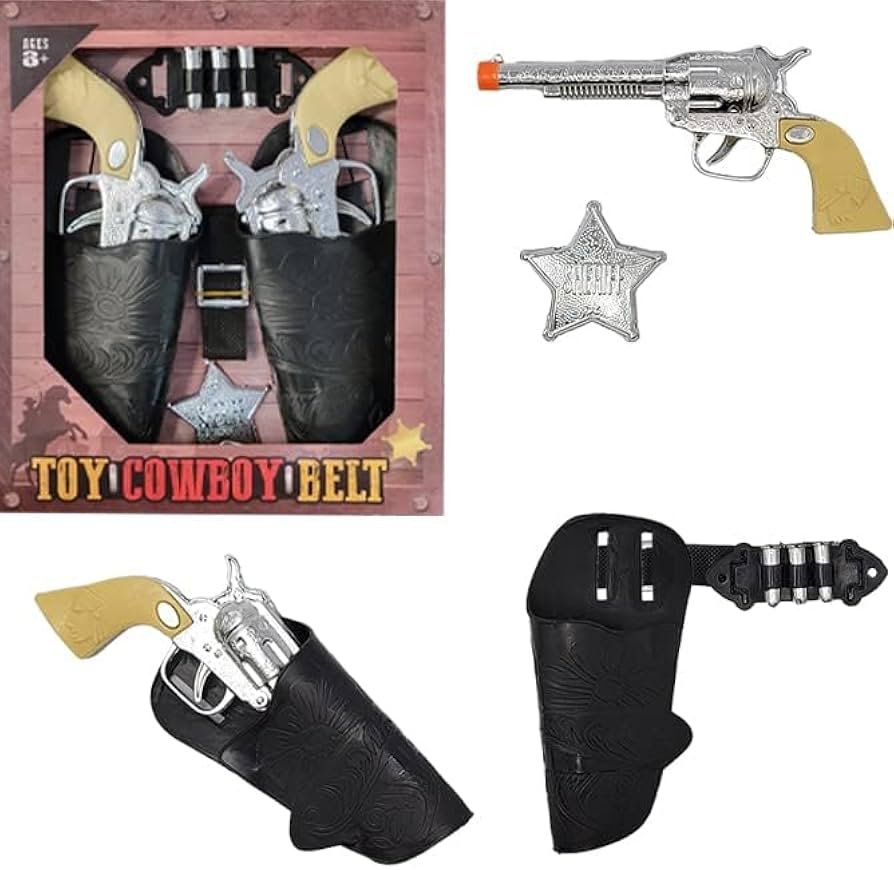
Holster Types And How They Affect Fit
Holster type changes how fit feels and works in real life.
- IWB (Inside-the-Waistband): Great concealment. Needs a firm belt and proper clip spacing. A wedge or claw can reduce printing.
- OWB (Outside-the-Waistband): Easiest draw and reholster. Look for snug belt loops and body-contoured design to reduce printing.
- Appendix (AIWB): Demands precise fit and trigger coverage. A foam wedge improves comfort and angle.
- Duty/Tactical: Often uses Level II or III retention. Fit must balance speed and security.
- Pocket/Ankle: For small guns only. Pocket holsters must stay put during draw.
Pick the type that matches your carry style and body shape. Fit is not only about the gun. It’s also about how you wear it.

Retention: Levels, Adjustments, And Testing
Retention is how the holster holds the firearm in place. There are two kinds.
- Passive retention: Friction or a “click” over the trigger guard (common with Kydex). Adjustable screws fine-tune it.
- Active retention: Buttons, hoods, or levers you release during the draw (common for duty use).
Many law enforcement holsters follow standardized “Level II/III” language to indicate extra retention features. For concealed carry, solid passive retention is usually enough. For open carry or duty, consider Level II or higher.
How to test retention:
- Set it so the gun does not fall when you shake the holster lightly.
- Ensure you can draw with a normal grip and motion.
- Practice releases for active systems until it’s automatic, with the firearm unloaded first.

Safety First: Trigger Coverage And Controls Clearance
Cover the trigger guard, full stop. You should not be able to reach the trigger at all while holstered. The holster must also clear the slide, magazine release, takedown lever, and safeties without pressing or rubbing them.
What to check:
- No pressure on the mag release when seated or when you sit down.
- No interference with slide or optic during draw.
- No soft material folding into the trigger area.
This is where quality shows. Clean edges, solid mouth, and proper mold lines keep you safe.
Comfort, Concealment, And Daily Wear
A holster can “fit” your gun but fail your body. Comfort and concealment matter.
- Ride height and cant: Higher ride helps with a fast draw. Lower ride helps conceal. Cant adjusts how the grip prints.
- Belt and clips: Use a rigid belt. Size clips to your belt width. Dual clips spread weight and prevent tilt.
- Hot spots: Pressure points mean the holster is too bulky or not contoured. A small wedge can fix this for AIWB.
On long work days, I test holsters by driving, walking, and doing light chores. If I keep fidgeting, that holster does not fit my lifestyle.
Optics, Lights, And Aftermarket Parts
Optics-ready and light-bearing guns need compatible holsters. A standard Kydex mold will not fit a pistol with a weapon light or tall suppressor sights. Look for these specs:
- Optic cut for red dots.
- Tall sight channel for co-witness height.
- Light-specific fit for your exact light model.
- Threaded barrel clearance and compensator space.
If you change parts later, expect to change holsters too. Model, gen, and accessory differences matter.
Materials, Break-In, And Care
Material changes how fit behaves over time.
- Kydex: Rigid, precise, little break-in. Adjust retention screws. Wipe clean. Avoid high heat.
- Leather: Comfortable, molds to you, needs short break-in. Keep conditioned. Watch for softening near the trigger area.
- Hybrid: Kydex shell on a soft backer. Very comfy. Check hardware and backer wear regularly.
I log a week of daily carry for each new holster. If it loosens, I re-tighten hardware with thread locker. Small maintenance keeps fit consistent.
Common Fit Problems And Fixes
These issues are common and easy to diagnose.
- Gun won’t seat fully: Wrong model or accessory mismatch. Check the exact SKU.
- Rattle or wobble: Tighten retention screws. Add thread locker after dialing it in.
- Printing: Adjust cant and ride height. Use a claw or wedge. Wear a proper belt.
- Hot spots: Try different positions on the belt. Add a thin foam wedge.
- Clip failure: Upgrade to metal clips or closed loops. Match belt width.
If you keep fighting the holster, it’s the wrong match. Time saved now beats frustration later.
Buying Smart: Specs, Returns, And Warranty
Read the spec sheet like a checklist. Confirm exact firearm model, generation, barrel length, light model, optic cut, and hand orientation. Look for ride height and cant options, belt width, and return policy.
Before you commit:
- Choose makers who publish model compatibility clearly.
- Favor adjustable retention and solid hardware.
- Check return and exchange windows in case the fit is off.
- Look for warranties and responsive support.
I keep the packaging until I pass my week-long carry test. If it fails, I return it fast and try the next option.
Frequently Asked Questions Of How Do I Know If A Holster Fits My Firearm?
How tight should my holster be?
Tight enough that the gun does not fall out during a light shake test, but not so tight that you struggle to draw. Adjust retention screws until you get a smooth draw and a confident seat.
Can one holster fit multiple guns?
Sometimes, if they share the same frame and slide profile. But model-specific holsters are more secure. Accessories like lights and optics make universal fit unlikely.
Do I need a special holster for a red dot or light?
Yes. You need an optic cut for red dots and a light-bearing mold for weapon lights. Using a non-compatible holster can block the draw or reduce retention.
Is leather or Kydex better for fit?
Kydex gives precise, consistent retention with little break-in. Leather is comfortable and molds over time. Both can fit well if made for your exact gun and maintained correctly.
What if my holster presses the mag release?
Stop using it. That’s a safety issue. Choose a holster with better clearance, or one made for your exact model and generation.
How do I prevent printing when carrying concealed?
Adjust ride height and cant, use a claw or wedge, and wear a rigid belt. Placement around the hip or appendix can also reduce printing.
How often should I inspect my holster?
Do a quick weekly check. Look for loose screws, cracked clips, softening leather, or debris inside the holster. Clean and tighten as needed.
Conclusion
A holster fits your firearm when it is safe, secure, and easy to use every single day. It covers the trigger, holds through movement, draws clean, and reholsters without a fight. Use the step-by-step checks above, match the holster to your exact gun and accessories, and do a real-life wear test. Your carry setup should work for you, not against you.
Take action today. Grab your gear, run the checklist, and tune your setup. If something feels off, swap it out. Your confidence and safety are worth it. Want more tips and tested picks? Subscribe, share your experience in the comments, and keep learning with the community.
